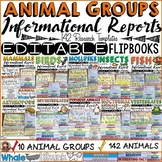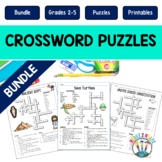69 results
Higher education earth sciences webquests
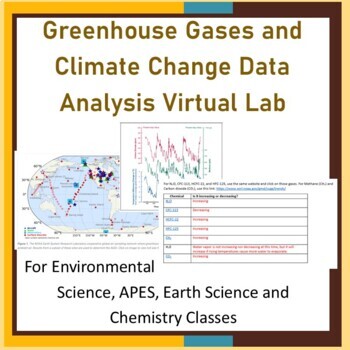
Greenhouse Gases and Climate Change Data Analysis Virtual Lab
Updated links as of March 2022. This lab for in-person or distance learning uses a variety of data from NOAA and other websites to help your students understand greenhouse gases, where they are found and whether they are increasing or decreasing. Then, students analyze data about the effects of climate change with real-time data about temperature, precipitation and other data. Then, students delve into longer term data including ice-core data.This lab walks students through each graph and data s
Subjects:
Grades:
9th - 12th, Higher Education
Types:
NGSS:
HS-ESS3-3
, HS-ESS3-1
, HS-ESS3-5
Also included in: AP Environmental Science Unit 9 Bundle

Ozone Depletion Data Analysis 5E Lab-- Computer Lab
Use this inquiry lab with in-person or distance learning students. 7 pages for students with key included. This lab is not a simulation, but rather looking at data from various sources.Time: 2-4 days (90 minutes to 3 hours depending on level of students and whether you choose to assign the elaborate and evaluate)Students use real online data to determine trends in ozone depletion around the globe and trends in ozone-depleting chemicals along with the science and current trends.Use with Environme
Subjects:
Grades:
9th - 12th, Higher Education
Types:
NGSS:
HS-ESS3-6
, HS-ESS3-4
Also included in: AP Environmental Science Unit 9 Bundle
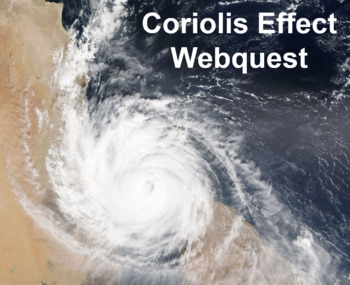
Coriolis Effect/Ocean Currents Webquest for Online/Remote/Distance Learning
Need a resource your kids can do online? This webquest is designed to allow students to teach themselves about the Coriolis Effect, El Nino, and the causes of ocean currents and their effect on Earth's climate. These websites do an excellent job of walking students through these concepts. The Coriolis Effect can be particularly confusing, but the website's use of animations, images, and simple, straightforward laguage has consistently helped my students to understand these difficult concepts.
Subjects:
Grades:
9th - 12th, Higher Education, Adult Education
Types:
NGSS:
HS-ESS2-2
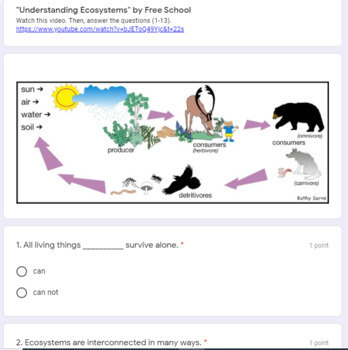
Ecosystem Parts (producers, consumers, decomposers) Google Form Video activity
Students watch a YouTube video on the parts of an ecosystem.Students answer questions to reinforce key concepts: what is an ecosystem, what are the parts of an ecosystem, how living things get energy, living and nonliving parts of a ecosystem, and factors that affect the balance of an ecosystem. Key vocabulary are reviewed, including producer, consumer, herbivore, carnivore, omnivore, decomposer, photosynthesis, balance, organism, environment, community, population, and species).This Google Form
Subjects:
Grades:
4th - 12th, Higher Education, Adult Education, Staff
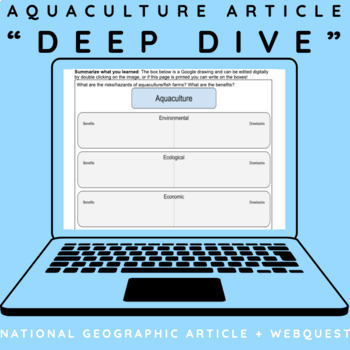
Aquaculture "Deep Dive" (Nat Geo Article + Webquest)
This activity asks students to complete a Deep Dive to analyze a National Geographic interactive article about aquaculture through guided webquest questions and analysis (graphic organizer). By the end of this lesson, students will be able to compare benefits and drawbacks of aquaculture on four scales: environmental, ecological, economic, and impact on humans. This lesson was originally designed for AP Environmental Science, to satisfy topic 5.16 Aquaculture in the new Course & Exam Descrip
Grades:
9th - 12th, Higher Education
Types:
NGSS:
HS-ESS3-3
, HS-ESS3-2
, HS-ESS3-1
, HS-ESS3-4

Aquatic Ecosystem Webquest + Key
This webquest allows the students to explore different aquatic ecosystems. These ecosystems include, Southern and Northern Oceans, Coral Reefs, Deep Sea, Hydrothermal Vents, Mangroves, Kelp Forests, Rocky Shores, Salt Marshes, Estuaries, and Wetlands. 50 questions long! *Determine if your grade/ students can complete the whole document or if you have to chunk the lesson up* My 10-12 graders are able to complete this. Great student based inquiry lesson! Key is included.*spelling corrections made
Subjects:
Grades:
6th - 12th, Higher Education, Adult Education
Types:
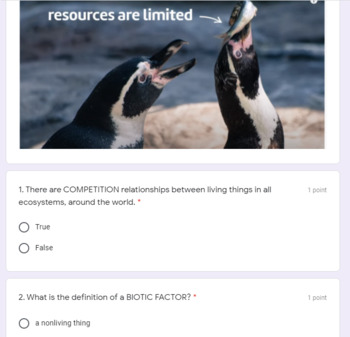
Why is There Competition Between Species? Google Form Video Ecosystems Activity
Students watch a YouTube video on why there are competition relationships in ecosystems.Students answer questions to reinforce key concepts: what is competition, what is a competitive relationship, what are the parts of an ecosystem, abiotic factors and abiotic factors, what are limited resources in an ecosystem, how living things get energy, interdependent relationships in an ecosystem, and factors that affect the balance of an ecosystem. Key vocabulary are reviewed, including competition, spec
Subjects:
Grades:
4th - 12th, Higher Education, Adult Education, Staff

Computer Model: Water Pollution Web Game activity - Bio Man Bio simulation
This handout guides students as they investigate water pollution, water quality, species diversity and species abundance in an aquatic ecosystem. Students use The Peril River Problem interactive web game on the BioManBio website: https://biomanbio.com/HTML5GamesandLabs/EcoGames/ecodetectiveshtml5page.htmlIn this online experiment, students monitor dissolved oxygen levels and the population growth of species to evaluate the human impact on ecosystems. Students apply key concepts on watersheds and
Subjects:
Grades:
5th - 12th, Higher Education, Adult Education, Staff
Types:

Your Ecological Footprint: WebQuest + Coloring Activity
This WebQuest is a great way for your students to learn what an ecological footprint is, what their particular footprint is, and how they can work to reduce it. After completing the WebQuest, students will be directed to drawing on a footprint all of the ways they plan to reduce their ecological footprint throughout the year. I recommend hanging these on the wall somewhere in the classroom and referring back to them throughout the year. This resource will come to you in the form of a Google Doc.
Subjects:
Grades:
6th - 12th, Higher Education
Types:
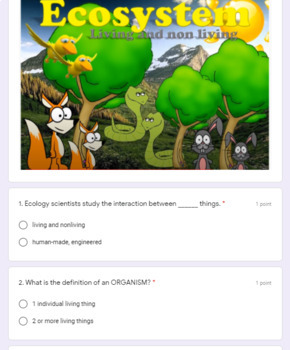
What Makes Up an Ecosystem? Google Form Video Populations Community Activity
Students watch a YouTube video on relationships in ecosystems.Students answer questions to reinforce key concepts: what are the parts of an ecosystem, abiotic factors and abiotic factors, what are limited resources in an ecosystem, how living things get energy, interdependent relationships in an ecosystem, what is competition, what is a competitive relationship, predator and prey relationships, and factors that affect the balance of an ecosystem. Key vocabulary are reviewed, including competitio
Subjects:
Grades:
4th - 12th, Higher Education, Adult Education, Staff

Marine Science Worksheet: WebQuest: How Earth Got Water & How Ocean Became Salty
Product Overview: If your marine science students are learning about how Earth got water, and how that water became salty, check this resource out! It may surprise you, but the answer to how the ocean became salty is not as straightforward as you may think, which I think is pretty cool. This digital or paper-based webquest is sub-friendly, and spans just 4 websites, all of which are linked. Each question utilizes paragraph indicators, enabling the students to avoid frustration, find answers, lea
Subjects:
Grades:
9th - 12th, Higher Education, Adult Education
Types:
Also included in: Marine Science Bundle - for A.K: (5) Cool Labs, (2) Webquests, (1) Notes
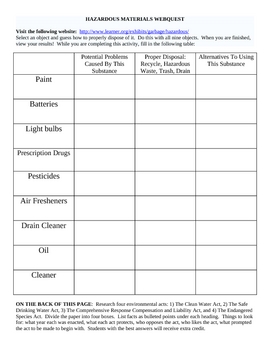
Hazardous Materials WebQuest - disposal hints
This document (created by Lindsey DeLuca) contains a WebQuest activity in which students learn about different hazardous materials and why each one is bad for the environment. Then, students learn about the proper ways to dispose of these materials. The document also contains an extension activity in which students research political advances for the environment, such as the "Clean Water Act." This activity would be useful for the following courses: general science, environmental science, APE
Subjects:
Grades:
5th - 12th, Higher Education, Adult Education
Types:

Earth's Interior, Plate Tectonics, Rock Cycle WebQuest and PPT Bundle
NOTE: The bundle comes with a second WebQuest that is no longer available. There is still two PowerPoints and one WebQuest in the bundle that you are buying, but I haven't removed the Interactive Rock Cycle WebQuest from the zip file as of yet. This bundle contains one WebQuest and two lecture PowerPoints.The first PowerPoint describes the Rock Cycle and then goes in depth to talk about the three types of rocks, Igneous, Sedimentary and Metamorphic and how they are formed. It describes each of t
Subjects:
Grades:
7th - 12th, Higher Education
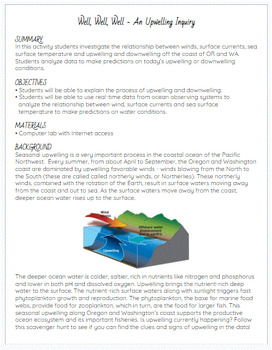
Well, Well, Well - An Upwelling Inquiry
In this activity, students will use the nanoos.org website to explore live ocean buoy data in order to determine if upwelling is happening off the Pacific Northwest Coast of North America. This is a higher level thinking assignment in which students will have to analyze data and apply their knowledge to form a conclusion.The assignment starts with some background information about upwelling, and then directs students to the website. There, they will examine live data, in 4 categories - wind di
Subjects:
Grades:
10th - 12th, Higher Education, Adult Education
Types:

Watersheds Guided Films Worksheet distance learning remote learning
Students record information on watersheds. Key concepts include the importance of watersheds, how water cycles, threats to watersheds, and how to protect them.You can find the YouTube playlist here:https://www.youtube.com/playlist?list=PLQeHPCldNdN621YRgQiYTdly9YJ7I6sAJAnswer key is included.This is an editable .rtf file.
Subjects:
Grades:
3rd - 12th, Higher Education, Adult Education, Staff
Types:
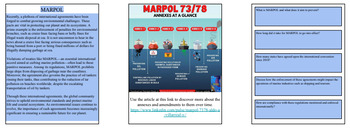
MARPOL and International Agreements
Students study MARPOL, an international agreement that focuses on cruise ships and the shipping industry creating marine pollution through oil, air, sewage, garbage, and other harmful substances. Students learn about the reasonings for annexes and amendments, as well as the complications and organization of international agreements. For the LinkedIn link, I opened it in my own account and then printed the website as a PDF for my students and attached it to their Google Classroom to view.
Subjects:
Grades:
8th - 12th, Higher Education, Adult Education
Types:
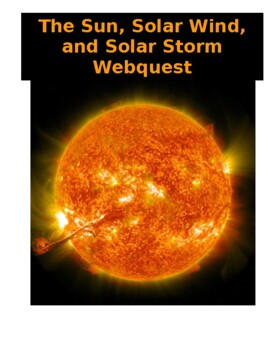
The Sun, Solar Wind, and Solar Storm Webquest (Online/Digital Resource)
This webquest is based around three websites that teach students about the effects the sun (specifically its solar wind) has on the Earth and the solar system.The first is a space.com article covering what solar wind is, and how it interacts with Earth's magnetic field.The second is from the EPA website, which explains the causes and effects of solar flares, storms, and coronal mass ejections (CME's)The third teaches students about how solar wind from the sun creates a "bubble" around the solar
Subjects:
Grades:
9th - 12th, Higher Education, Adult Education
Types:
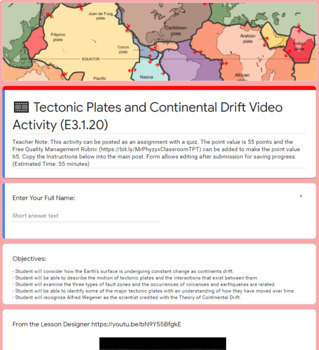
Tectonic Plates and Drift LinkLesson® - Online Blended Distance Remote Learning
Short Description: Students learn about the Earth's crust and tectonic plates as it relates to continental drift including maps, convergent, divergent, and transforming plates, earthquakes, and GPS rates of movement Students view instructional media and answer formative questions. Students will complete an Annenberg Lerner mini-course and assessment, before completing a short reflective writing. (60-90 min, 21 Pages if printed)See an overview video for this LinkLesson: This LinkLesson Video.Se
Subjects:
Grades:
6th - 12th, Higher Education, Adult Education
Types:

Mineral Uses Web Exploration
This is a lab in which students search the internet for the uses of the common minerals that they should be able to identify. Students should use computers to search each of the minerals, but I allowed them to use their phones because no computers were available and it worked just as well. **Answer Key is INCLUDED on PAGE 2**
Subjects:
Grades:
9th - 12th, Higher Education
Types:
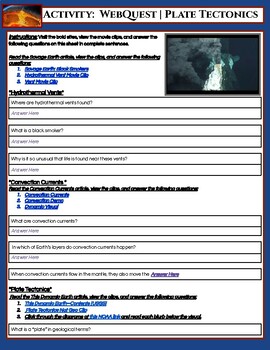
Plate Tectonics WebQuest | Mini-WebQuest Plate Boundaries Divergent, Convergent
I use this WebQuest as an alternative to a traditional formal assessment for my Plate Tectonics Chapter. This WebQuest has students describe, explain, and model plate tectonic boundaries on through dynamic interactive sites and resources. Students will read, reinforce, as information is scaffolded through graphic organizers for data. Animated Article link included!! Answer key included!! Quizlet and Blooket links included!! Suggestions for implementation of course also included.
Subjects:
Grades:
6th - 10th, Higher Education, Adult Education
Types:
NGSS:
MS-ESS2-2
, MS-ESS2-1
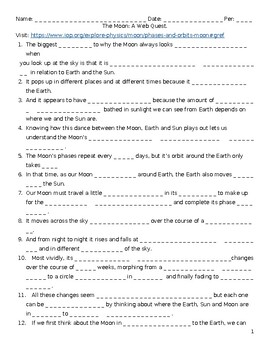
The Moon - A WebQuest
In this web quest students will learn about why the moon rises and sets in a different portion of they sky each night, a review of why we see phases, and how this is all linked to synchronous rotation. Kindly leave a review of my work, it will help me create more products! Thanks so much! Ms. D. :-)
Grades:
4th - 12th, Higher Education, Adult Education, Staff
Types:
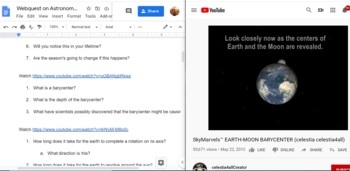
Astronomy Webquest
This web quest covers rotation, revolution, procession, Kepler's laws, and a few other fun astronomy facts. The file includes a student copy and an answer key.
Subjects:
Grades:
7th - 12th, Higher Education, Adult Education
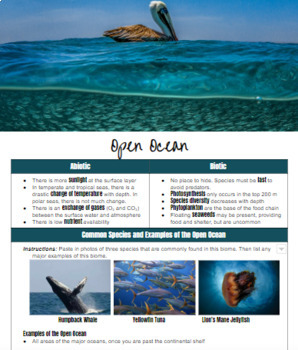
Biomes Digital Assignment - Google Docs
This is a virtual assignment. Assignment is organized with one biome per page: - Open Ocean (teacher example) - Desert - Tundra - Taiga (Boreal Forest) - Temperate Forest - Grasslands - Tropical Rainforest For each biome, there is a place for students to bullet point biotic vs abiotic features of each biome, find photos and common names of three common species of that biome, and list the major examples on Earth of that biome. Open ocean is fully filled already, as a teacher example. Great for AP
Subjects:
Grades:
9th - 12th, Higher Education
Types:

Renewable Energy Around the World: Interactive Map & Research Activity
With this Google Slides activity, students will conduct research about various renewable energy resources used in 8 different regions of the world. The first slide of this slideshow is an interactive map of the world; the 8 regions are clickable, directing students to more region-specific information. On the region-specific slides, students choose from articles provided or research their own about energy generation from renewable resources in specific countries in that region and summarize the i
Subjects:
Grades:
8th - 12th, Higher Education
Types:
CCSS:
NGSS:
HS-ESS3-3
, HS-ESS3-2
, HS-ESS3-1
, HS-ESS3-4
Showing 1-24 of 69 results


